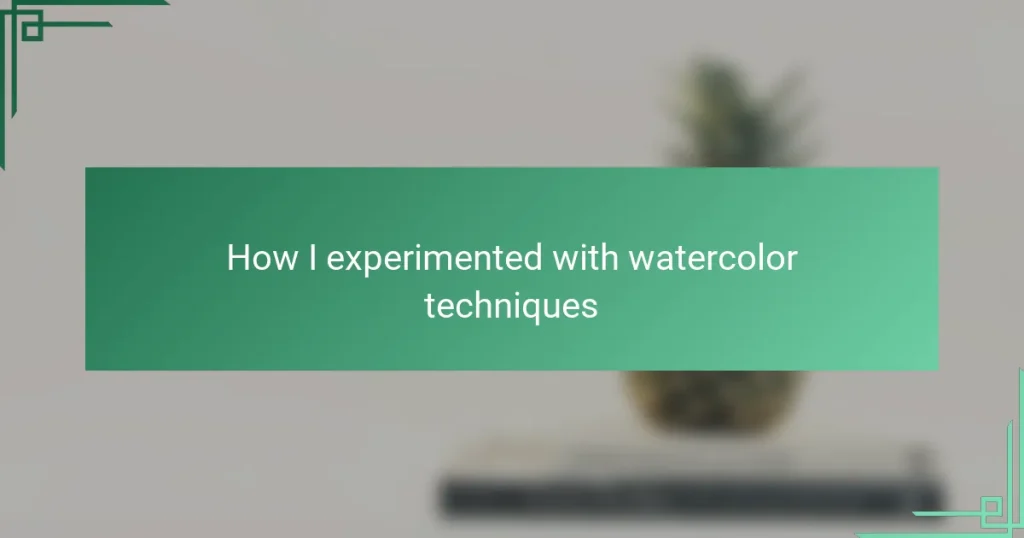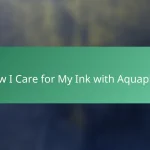Key takeaways
- Watercolor tattoo techniques create a fluid and ethereal effect, blending colors to resemble watercolor paintings while maintaining clarity.
- Key tools include high-quality watercolor paints, thick textured paper, and soft round brushes to achieve delicate strokes and gradients.
- Challenges include managing water flow and pigment absorption, which require patience and careful experimentation to maintain depth and softness.
- Embrace spontaneity in the creative process; unexpected results can enrich designs and enhance their emotional impact.
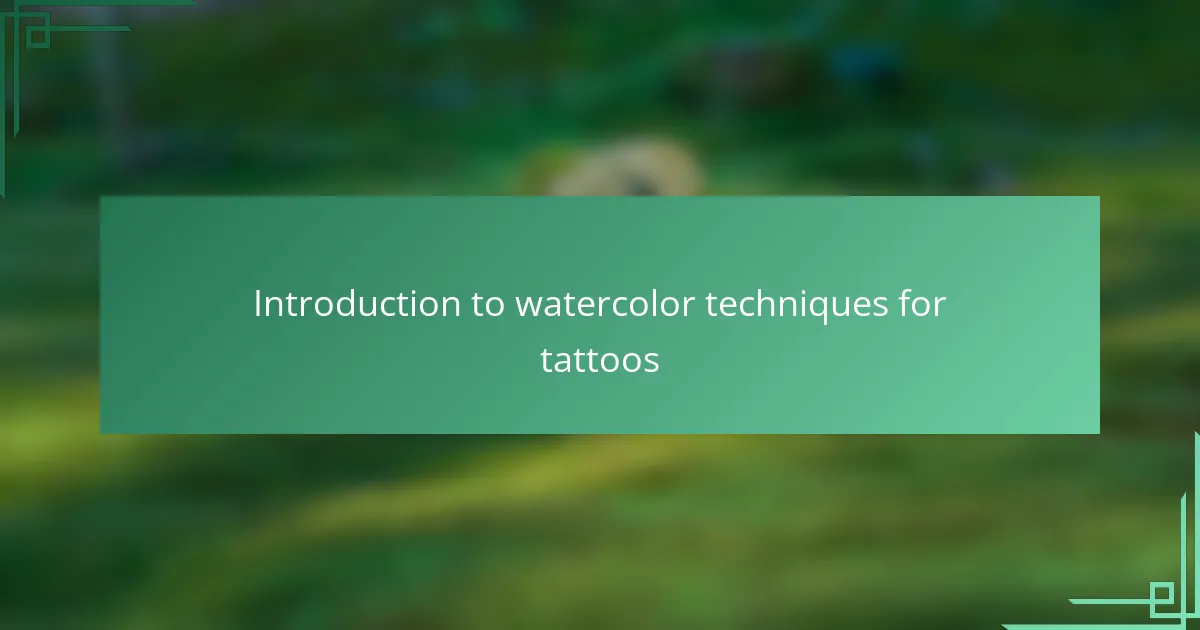
Introduction to watercolor techniques for tattoos
Watercolor techniques in tattoos bring a unique fluidity and softness that I hadn’t seen in traditional tattoo art before. I was immediately drawn to how the colors seem to blend and bleed naturally, much like an actual watercolor painting, creating an almost ethereal effect on the skin.
When I first tried experimenting with these techniques, I wondered how to capture that delicate balance without losing the boldness a tattoo needs to withstand time. It was a challenge to mimic the light washes and gradients while ensuring the design remained striking and clear.
Have you ever seen a tattoo that looks like it’s been painted on with brushstrokes rather than ink? That’s the magic of watercolor tattoo techniques — they invite a more artistic, expressive style and offer endless possibilities for those willing to explore beyond traditional lines and shading.

Basic tools and materials needed
To get started with watercolor techniques, you really need the right tools. I found that having good-quality watercolor paints made a huge difference; the pigments have to be vibrant and blend smoothly. Cheap paints just didn’t give me the depth and fluidity I was after.
Paper choice also surprised me. I initially grabbed regular sketch paper, but it soaked up the water too fast and left the colors looking flat. Switching to thick, textured watercolor paper helped me control washes and layering much better, almost like how a tattoo artist layers ink to achieve richness.
And of course, brushes matter. I started with standard brushes but quickly realized softer, round brushes with fine tips worked best to mimic the delicate strokes and gradients I wanted to replicate in tattoo ink. Have you ever noticed how the right brush can change everything? It’s like a tattoo needle—precision and softness both count.

Step by step watercolor tattoo process
The first step I always take when creating a watercolor tattoo design is sketching out the basic form with a fine liner. This outline acts like a gentle guide, much like a tattoo stencil, but it’s purposely kept light to let the colors play freely. Have you ever tried holding back just enough so the colors can breathe? It’s a delicate dance between structure and spontaneity.
Next comes layering the colors in washes. I learned that applying thin, translucent layers lets me build depth without losing that signature softness. Sometimes, I’d mistake stronger pigment for intensity, but I found that subtlety is where the magic happens—like letting a tattoo’s color fade naturally to a stunning effect over time.
Finally, blending is key. I use a clean, damp brush to soften edges and let hues flow into each other, mimicking that wet-on-wet watercolor technique. It feels like bringing the tattoo to life, creating movement and emotion in the design. Isn’t it fascinating how this process mirrors the way a tattoo ages, evolving with the wearer’s skin?

Common challenges and solutions
One of the biggest hurdles I faced was controlling the water flow—too much, and the colors would spread uncontrollably; too little, and the effect looked stiff and patchy. I found that patience was key: letting each layer dry just enough before adding another helped me maintain that smooth gradient without muddying the colors.
Another challenge was translating the softness of watercolor onto skin without losing definition. I realized this meant balancing light washes with defined lines, much like how I used a fine liner in my sketches. Have you ever struggled to keep details sharp while still achieving that flowing, organic look? It’s all about knowing when to step back and when to add precision.
Lastly, I had to tackle the unpredictability of pigment absorption—both in paper and in practice. Early on, I’d rush the drying process and watch my colors dull or blend awkwardly. Taking time to experiment with different drying techniques taught me so much about timing and control, which I now see as essential for any watercolor-inspired tattoo design.
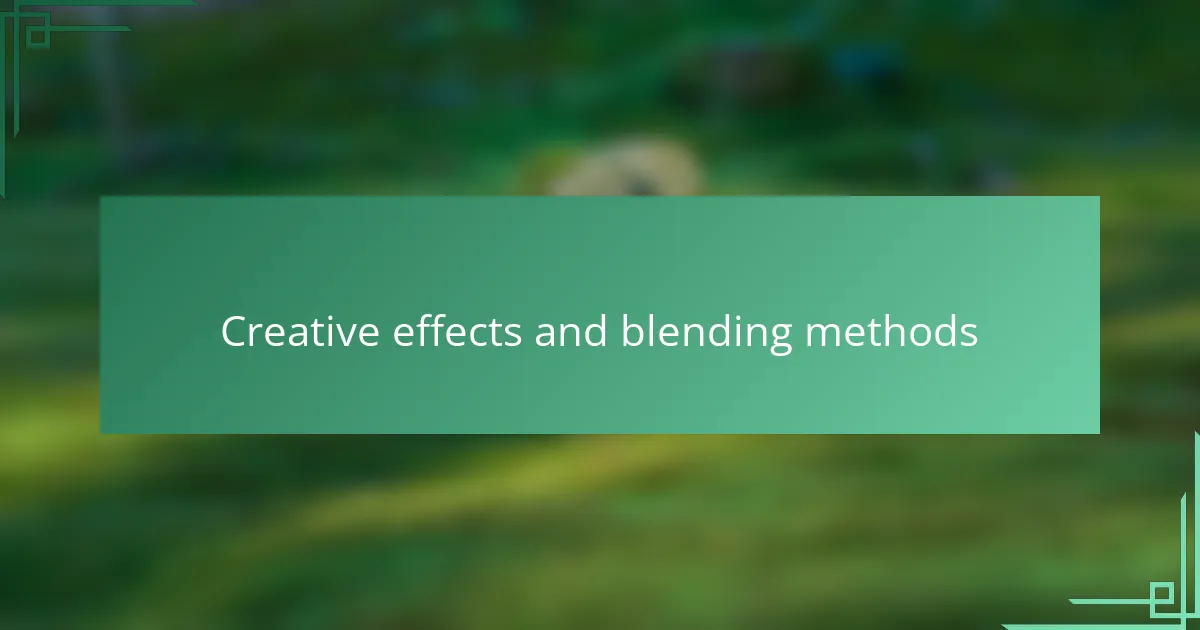
Creative effects and blending methods
When I first started playing with creative effects, I was amazed at how simple blending methods could totally transform a piece. For instance, using a dry brush to lift color created these beautiful textures that reminded me of faded tattoos I’d seen, where the ink almost seems to whisper stories rather than shout them. Have you ever noticed how subtle texture can add so much emotion to a design?
Blending colors smoothly was another discovery that felt like magic. I loved experimenting with wet-on-wet techniques, where droplets of paint merge unpredictably, creating organic transitions I couldn’t quite plan but only guide. This spontaneity brought a living quality to my work, much like how skin absorbs ink differently, making each tattoo uniquely personal.
Sometimes, I’d add surprising elements like splatters or layers of translucent glaze to mimic the look of watercolor bleeding gently into skin. It was a bit scary at first, risking ‘too much,’ but often that risk paid off in vibrant, lively results. Isn’t it thrilling to push boundaries and see where the colors take you?
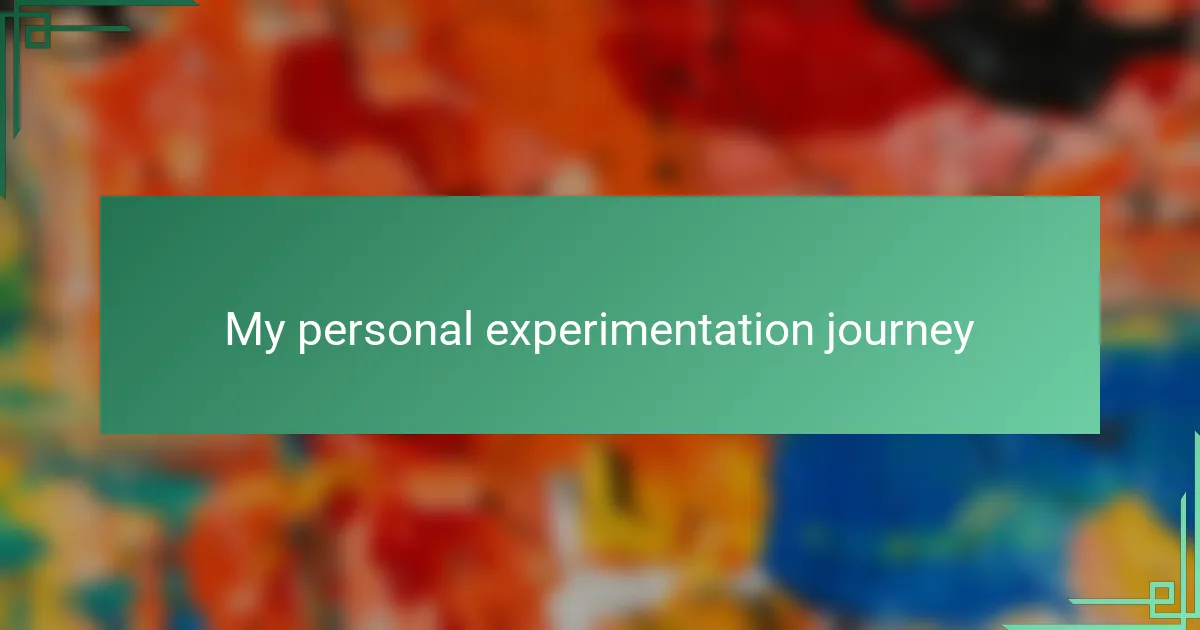
My personal experimentation journey
Diving into watercolor techniques felt like stepping into a whole new world for me. I remember the first time I let colors run freely across the paper—I was both excited and nervous, wondering if I could capture that same feeling in a tattoo. It wasn’t just about mixing pigments; it was about embracing unpredictability and learning to trust the flow.
One moment that stands out is when a seemingly “mistake”—a color bleeding too far—turned into inspiration. Instead of fighting it, I leaned into that unexpected softness, and suddenly the design breathed in a way I hadn’t planned. Have you ever found beauty in what you first thought was a flaw? That’s when I realized experimentation was just as much about letting go as it was about control.
Throughout this journey, I’ve kept asking myself how to balance delicate washes with lasting impact. Each attempt taught me something new—sometimes the subtle layers whispered emotions more powerfully than bold lines ever could. It’s thrilling to think that every brushstroke not only creates art but also tells a story unique to each experiment.
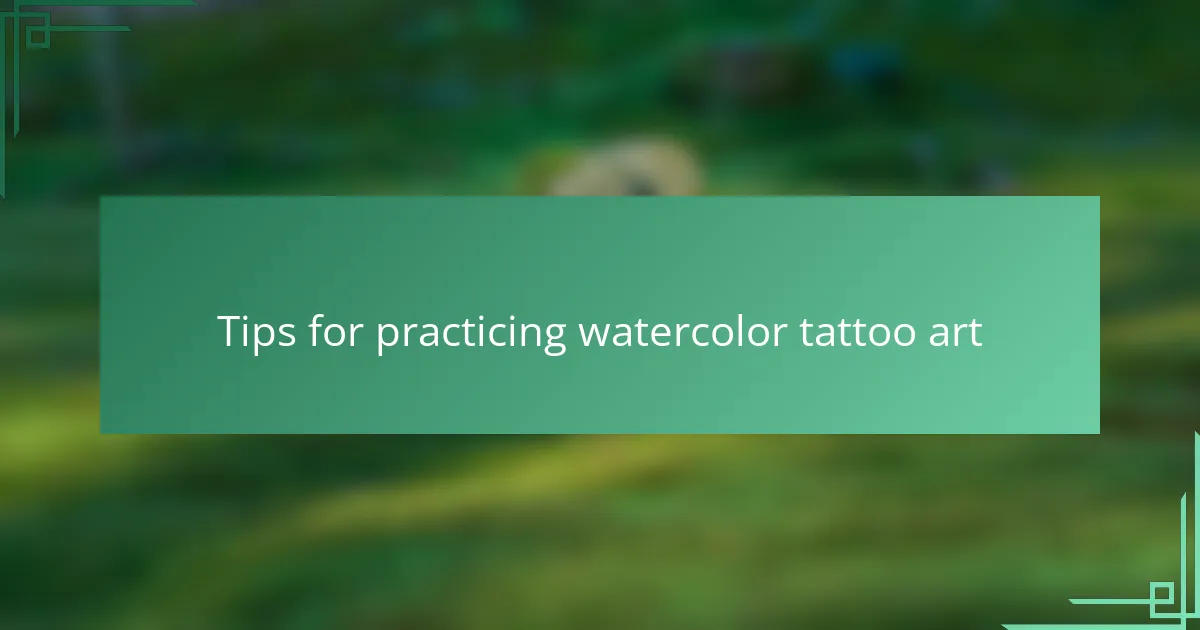
Tips for practicing watercolor tattoo art
One tip I learned early on is to practice your color layering slowly. Rushing through washes made my colors muddy, but taking the time to let each layer dry just enough helped me build depth without losing that delicate softness. Have you ever noticed how patience can turn a simple stroke into something truly vibrant?
Another piece of advice is to embrace the unexpected. When I first saw my colors bleeding beyond my intended lines, I panicked, but then I realized those “happy accidents” often added a unique, organic feel to the design. Isn’t it exciting how stepping back and letting the paint flow can create surprises you’d never plan?
Finally, don’t underestimate the power of clean brushes and controlled water flow. I found that too much water turns the art into a mushy mess, but too little makes it look stiff. Finding that sweet spot reminded me of tattooing itself – balancing precision with fluidity to keep the design alive and fresh. Have you experimented with this balancing act in your own practice?
